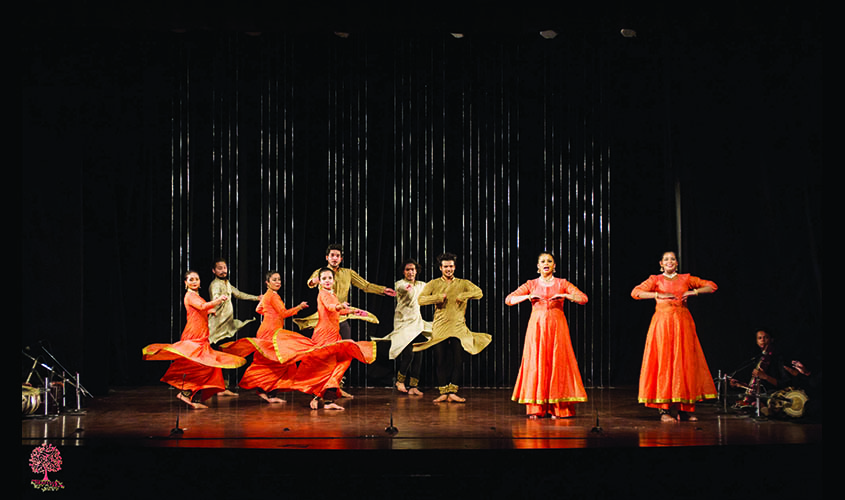Aditi Mangaldas, a leading Kathak dancer and choreographer, is today recognised for her artistry and eloquence that marks each of her performances. Recently nominated in the category of outstanding classical performance by the National Dance Critics Circles awards, this year in the United Kingdom, Mangaldas was here in the capital with her dance company—The Drishtikon Dance Foundation— last week to showcase a vibrant contemporary Kathak performance.
Here are the excerpts from an interaction with the choreographer.
Q. How did your journey as a Kathak dancer begin?
A. I started studying dance with my Guru Kumudini Lakhia when I was five-year-old, in Ahmedabad. I feel I am very lucky that I belong to a liberal family. Liberal in the sense, that they encouraged debates, questioning, agreeing and disagreeing. I feel it is very important to question when you are learning something, especially a great art form like Kathak. My guru was also somebody who taught to not wear ‘blinkers’ and be open to the world and open to what is all around. In my early 20s, I came to Pandit Birju Maharaj and it was a magical experience to be there with him too because he used to say, ‘love dance as if it was your lover, and as if it was so close to you’. He taught us the sense to awaken each cell in your body.
Q. How did both of your gurus influence your dancing?
A. With guru Lakhia it was more about essence and Maharaj ji taught me to be more connected to my ‘inner point’ than to the rest of the space in my body. Therefore, I feel I was very lucky to have two great gurus as my mentors. I personally believe that you really have to have the courage to dance one’s ‘own dance’ and then I started taking steps on my own and eventually life has been the best teacher. I don’t like to be a satellite as I am a ‘centre’ as well. I believe that women can also be the centre of the universe.
Q. How difficult was it for you to come up with your own dance academy?
A. I think guiding force has to be passion and deep emersion in arts. Of course there are problems to tackle with, but who does not? You have to take it as a given that there will be ups and downs but the courage has to come from somewhere and I think courage is something which happens when there is love and you have to accept defeat, failure. For me classicism is more about being timeless than old. We are a great country which has and has had a great heritage and culture. I am a woman of today and I will dance and make my own shastra, and tell my own stories. Kathak means ‘katha kahe so kathak’.
Q. What do you have to say to young dancers?
A. First and foremost, there is no shortcut. You have to have the sense of passion and complete emersion in it and the quality and excellence is through sadhana. It is not like grafting a mango tree onto a pear tree. We are sowing the seeds of Kathak. All of us are Kathak dancers who have danced for years and watering it with contemporary sensibility tell us it is all about absorption.
Q. How much do you think the younger generations appreciate Kathak as a dance form?
A. I think quality always speaks to people and of course there has to be a process and a proper art policy. In Delhi you don’t get a paid audience but when I was performing in Kamani Auditorium, we ticketed the entry for entire three days and the hall was full with people, because ‘quality’ speaks. Tickets are not about money, it is about having the courtesy and taking the trouble to go and buy a ticket and then you respect that. It’s about small steps that need to be taken.

